Wingfoil is the most important part
An open door, maybe. Many surfers recognize the importance of a good fin under their board. The correct length, stiffness, profile and shape of the fin. In addition to the fin, the shape of the board and the so-called drag is also important.
In wing foiling, the right foil is even more important. More important than the board. The wing foil consists of several components that each contribute to the desired properties, such as speed, lift and stability. However stiffness and a solid construction make or crack a wingfoil.
See the image on the right, where the parts of the wing foil are beautifully named.
In addition to the wing foil itself, there is a development that the shapes of the boards will also look different. Everything is aimed at getting to the foil as soon as possible.
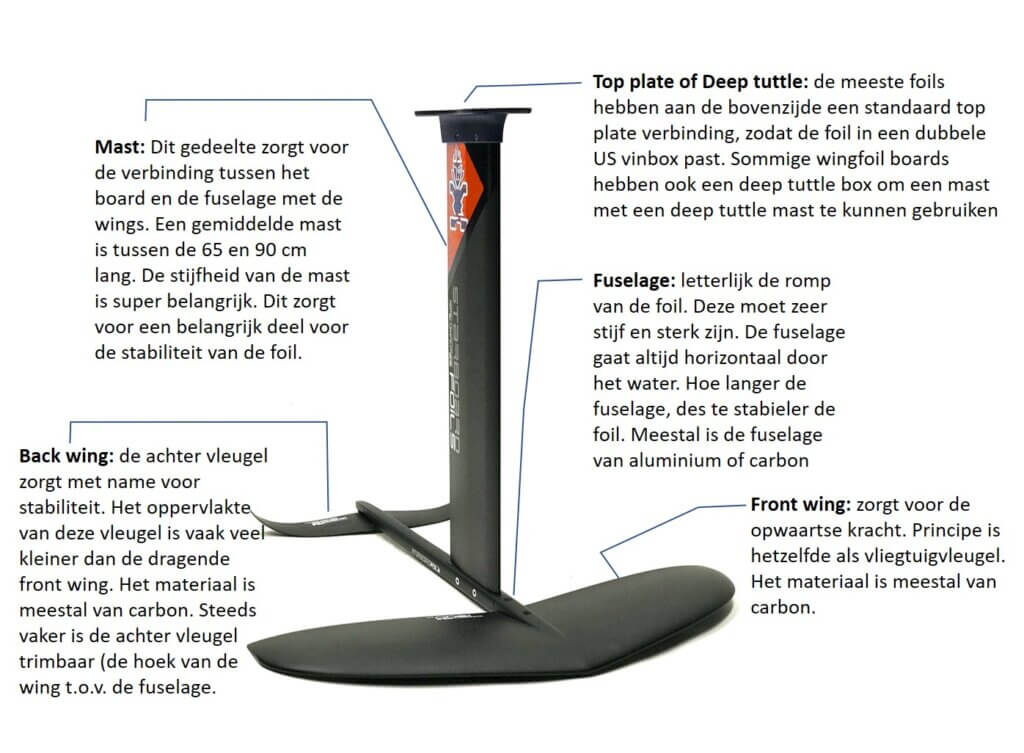
Mast
By far the most important part of the wing foil. This part forms the connection between the board and the wing set. On most boards, the mast is mounted on the board with a double US vinbox. The advantage of this is that the mast can be placed forward or backward to get more or less lift.
The US vinboxes are positioned a bit further forward compared to the deep tuttle fin boxes in the wind foil boards.
Aluminium vs carbon
Most masts are made of carbon or aluminum. Carbon has the advantage that it is stiffer and lighter than aluminium, but more expensive than aluminium. The carbon masts give a slightly ‘smoother’ feeling and are slightly faster compared to the aluminium masts.
Fuselage
In other words, the rod the wings are connected (sometimes stuck and sometimes demonstrable) to the mast. This is for wingfoiling between 65 and 75 cm long. The longer the fuselage, the more stable (front and rear) the wingfoil is. However, a longer fuselage makes it much less easy to make the pump movement with your feet to create lift.
Aluminium vs carbon
Most manufacturers opt for an aluminum fuselage. Only a few brands opt for a carbon variant or hybrid variant. The advantage of a carbon or hybrid or hybrid material fuselage is that it is a lot lighter, which makes the wingfoil playful feel and naturally rise faster.
Wings of the foil
Each wingfoil has 2 wings. A large front wing and a smaller back wing. The concept is similar to the wings of an aircraft. The profile has a flat side and a bulbous side. At the frontwing, the bulge is on the top for upward pressure. With the back wing, the emphasis of the bulge is right at the bottom. This just pulled the rear down, which makes the take-off easier. The back wing also provides stability and control while flying.
Larger surface is more lift
On average, it can be said that the larger the front swing, the greater the upward pressure. That is good for being able to fly quickly, but that upward pressure will work against more wind, because the front wing wants to go up even further. In addition, the resistance of a larger surface is also greater, which will lower the final speed of this wing foil.
On average, the front wings of wingfoils are a lot bigger than of windfoils. As a result, a wingfoil with a lower base speed already rises, where you first have higher speed with a windfoil.
If you want to know more about the impact of wing design, read our extensive article where we explain all the basic aspects of wings.
Quick lock fuselage
Starboard has developed a smart hybrid fuselage, which allows you to get on the water faster. The fuselage consists in fact of carbon and aluminium.
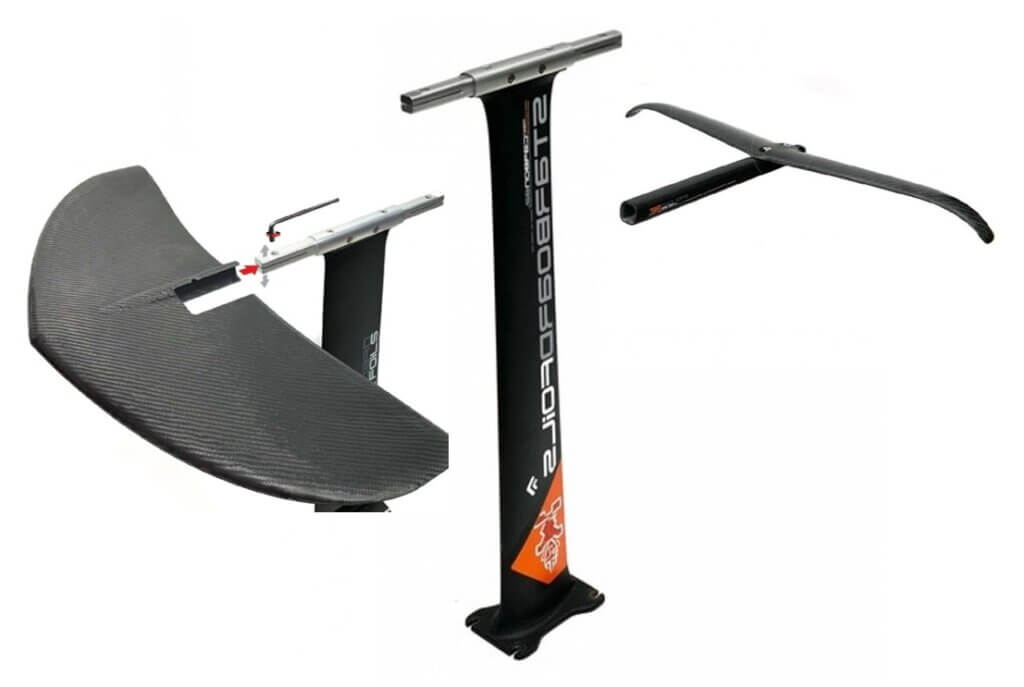
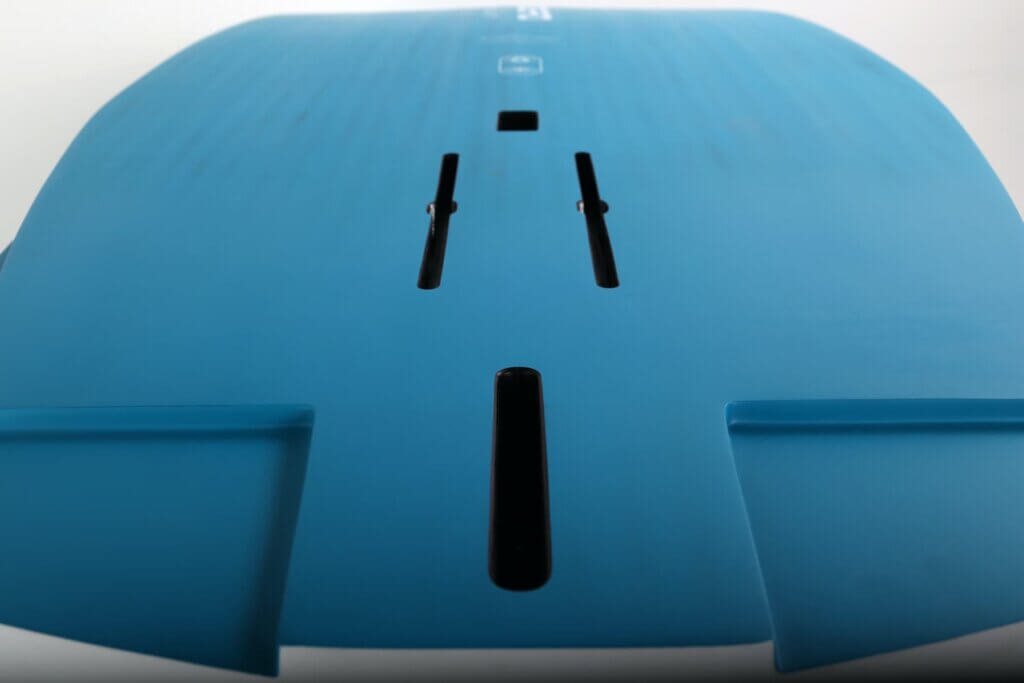
Wing foil boards
Wing foil board most resemble wave-sup boards or small wind foil boards. On average, the board are up to 200 cm long and the volume varies between 40 and 140 liters. Foot straps can often also be mounted on the board, but it is also fine without it. Because the boards are relatively small with little volume, the boards are also relatively light. Wingfoil boards carried in carbon weigh at most 6 to 7 kilos. The cheaper wing boards still weigh at most 8 to 9 kilos. The latter category is often much less vulnerable.
Most wing foil boards are equipped with a double US vinbox to mount the wing foil on the board. The US fin boxes are positioned further forward compared to the position of a normal fin. As seen on the right of the photo, there are also board where both a wingfoil with a top plate (mounting on US fin box) and a wing foil with a deep tuttle base fits in.
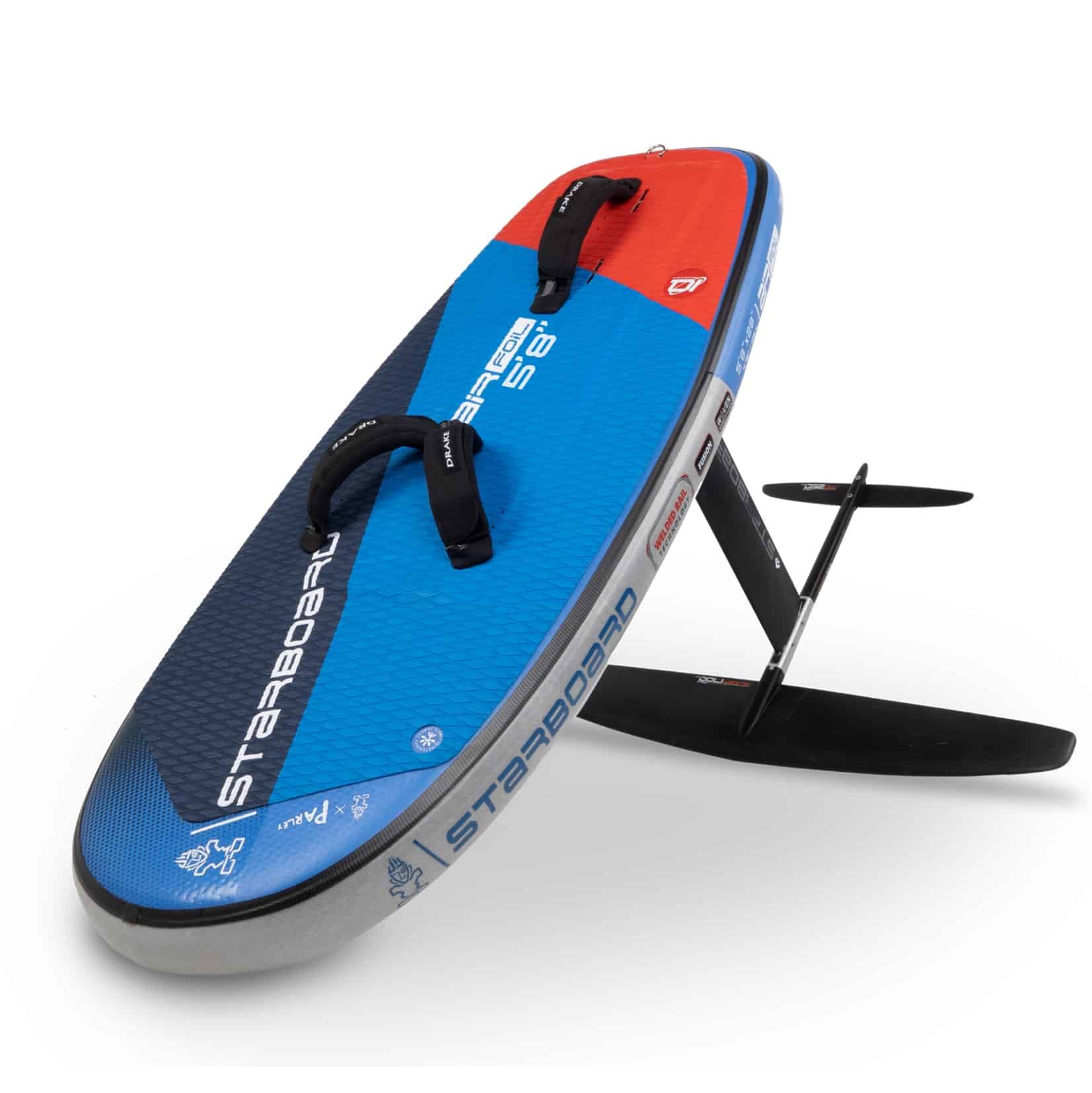
Hard or inflatable boards
In recent years, a lot of (good) inflatable SUPS and also windsurf boards have come on the market. The big advantage is that they are relatively light, have a lot of volume and they are easy to carry. In the meantime, several brands have also introduced inflatable wing foil boards.
If you don’t have too many demands or don’t have enough space, that’s fine, but our preference is for a hard board. The main reason is that the stability and response on and hard board is much better than on an inflatable variant. The connection of the foil to the board is never as stiff as that of a hard board and the response of your feet is also less direct than on a hard board. If you are looking for an inflabable board, the Starboard Air Foil is a very good board. The foil is mounted on a plate which makes this board much more stable and gives a much more direct feel.
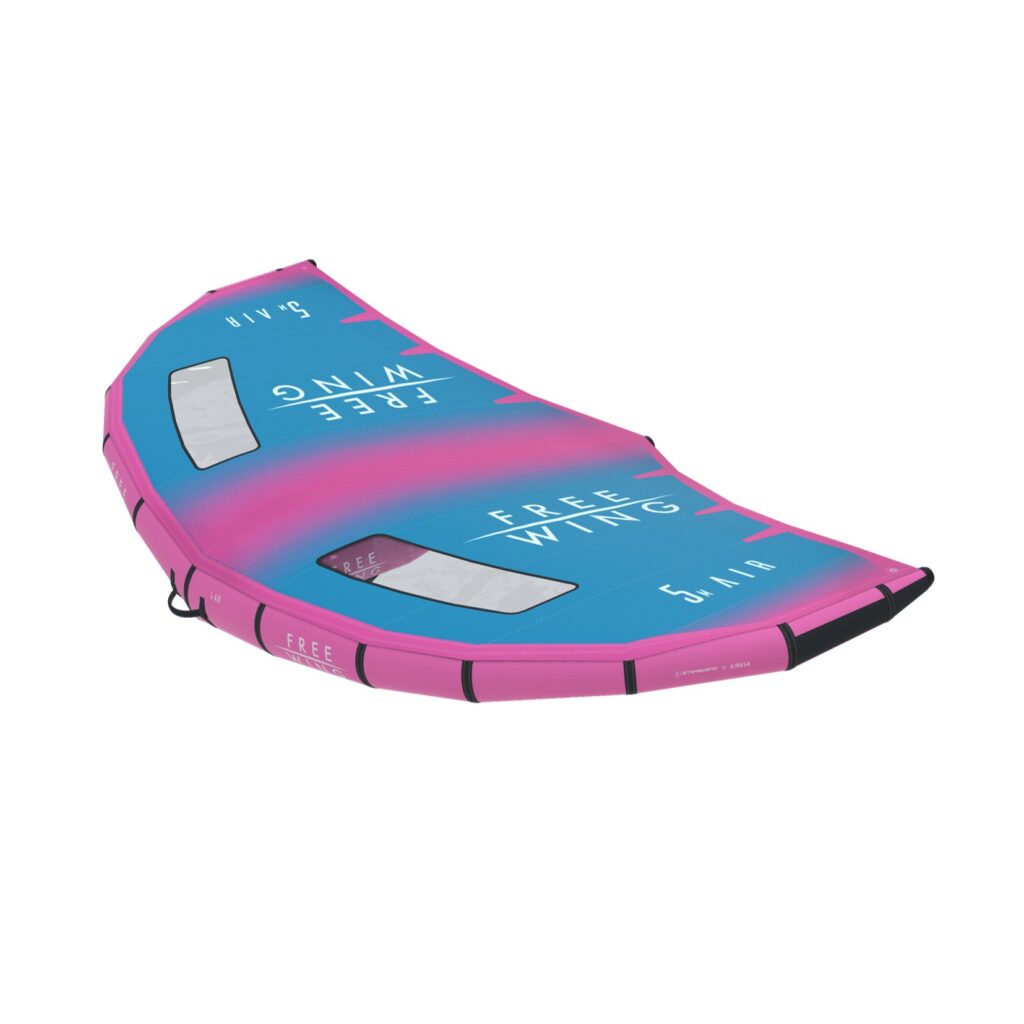
Wing foil wings
The engine of wing foiling is of course the wing itself. The construction and material is 1:1 taken from kite surfing. The fabric is extremely light and the frame of the wing consists of inflatable tubes. The wing is held in the middle by so-called handles.
Duotone also has wingfoils in its range with a boom instead of trade. The advantage of the boom is of course that you can place your hands anywhere, where with the ‘trading system’ you are limited to the 3 to 5 trade that sit on the wing. The disadvantage of the boom construction is that the wing naturally becomes a bit heavier.
Wings sizes
The most commonly used size for wings is about 5 to 5.5 m2. There are already 8.0 m2 on the market. The disadvantage of wings is that they quickly become unmanageable and drag through the water.
With about 10 knots of wind you can already wingfoil with a wing of 5.0 m2 with an average weight.


